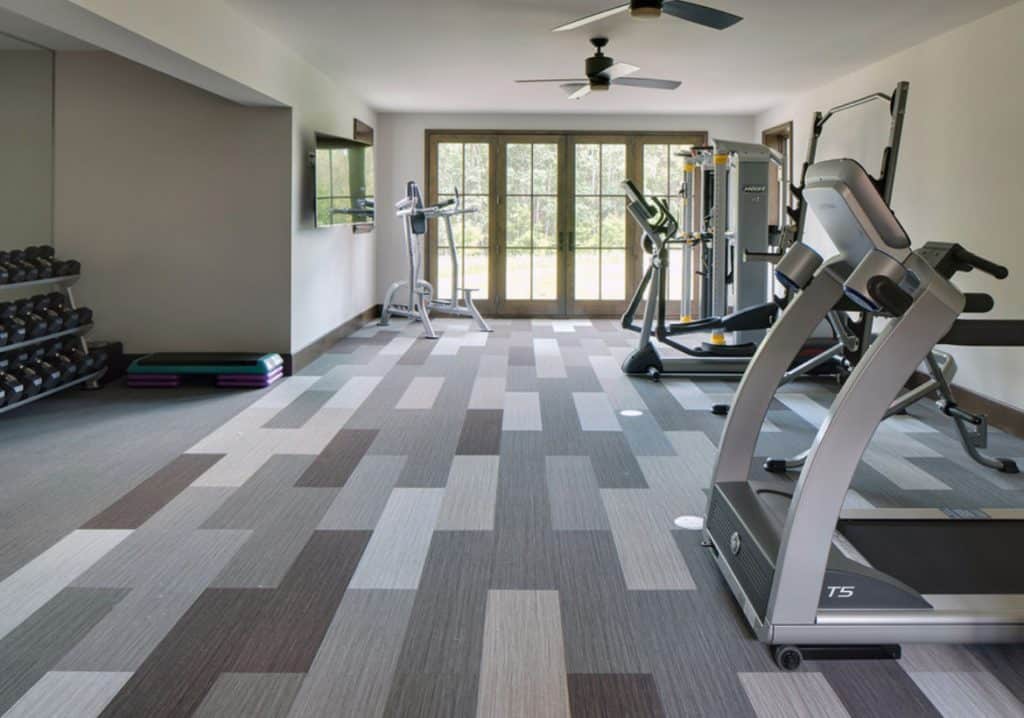A home gym is an ideal choice for people who want to be able to exercise at any moment and that, without a long commute to a local fitness club and back all the time. While the focus, for many people, is on choosing the best equipment for their regimen, too often, an essential aspect is forgotten.
The flooring you pick for your home gym is crucial because it helps you protect the floors in the room you choose for this purpose, and also, it provides the right foundation for the equipment you buy. Don’t forget to make sure you pick the right rowing machine after reading rower reviews. Even for you, the flooring is important because it lets you exercise in the best conditions possible.
Life Assure fall detection devices are also something worth considering when designing a home gym, particularly for individuals who may be prone to falls. These devices can help provide peace of mind during your workouts, ensuring that in case of an accident, help is just a button press away.
Pros and cons of rubber tiles
One of the options you will hear right away about is flooring made from rubber tiles. When you need to install heavy boxing bag stands in your home gym, that’s one great idea. Rubber tiles can support heavy equipment, and the great thing about them is that they can be installed even by someone without prior knowledge in installing such flooring. Also, they offer excellent impact absorption, regardless of the workout.
The main downside of this type of flooring is the cost. Rubber tiles are pretty expensive, and that means that you should consider making a substantial investment in your home gym. As you add to that the cost of equipment, you might end up with a pretty hefty amount to shell out for this purpose.
Pros and cons of rubber rolls
Rubber is, without a doubt, the type of material you should want on the floors of your gym if you want to benefit from the highest shock absorbency factor. While rubber rolls present the same advantages mentioned earlier for rubber tiles, they have one essential downside.
They are heavy, and that means that the cost of transportation will be quite high, adding to the price of the rolls. If you can afford them, they are the best solution for home gym flooring.
Pros and cons of foam tiles
If you can’t afford rubber tiles or rolls, foam tiles are the next best thing. They pretty much offer the same advantages as rubber, but their overall performance is somewhat inferior. Also, it must be noted that they are not extremely durable, which means that you will have to replace them once in a while. It is up to you to do the math and see which option would be better for your budget.
Pros and cons of carpet tiles
The easiest flooring to install in the room you intend to use as your home gym is carpet. This is a cheap material, and you will quickly discover that it is excellent for a DIY-er without prior experience. Also, because carpet tiles are versatile, they can be used for the area of the room intended for other purposes such as recreation and entertainment.
However, as the saying goes, you get what you pay for. Don’t expect carpet tiles to offer too much shock absorbency, and they do not provide the same cushioning effect. Their durability can also be an issue, so that’s, again, a consideration to bear in mind when you calculate your budget.
Pros and cons of vinyl
Another popular choice for flooring in home gyms is vinyl floors. This synthetic material offers several advantages, including excellent stain resistance and high durability. Moreover, it is a cost-effective option, particularly suitable when budget constraints are considered.
Still, if you intend to perform a lot of high impact workouts, you will discover that vinyl is subpar when it comes to absorbing shocks. Choose carefully and focus on the type of flooring that fits your style best.












